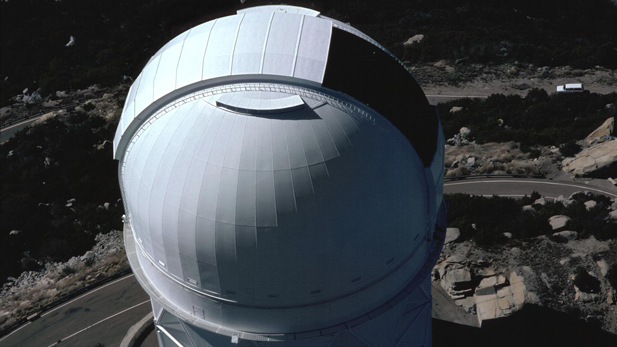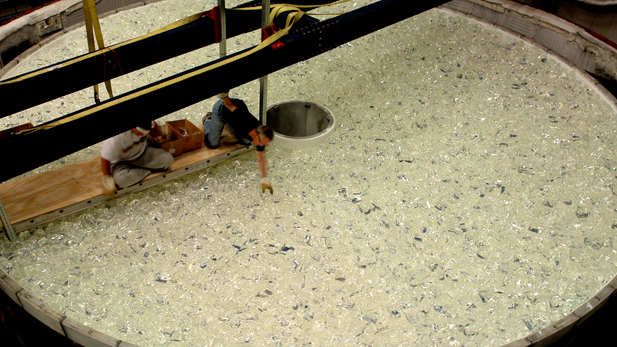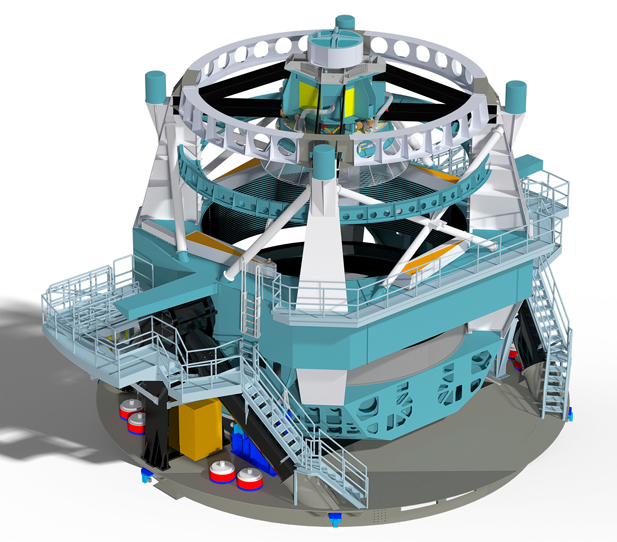Here be dragons. That's how the map makers of old referred to the many blank areas on the map. It was meant to suggest mystery, even danger. Astronomers admit that our map of the known universe also has a lot of blank spots on it. There's a lot of areas we know nothing about, and not all of it related to location. There's a lot of something out there that we don't know much about. And that enigmatic "dark energy" makes up most of the universe.
A new project called BigBOSS seeks to map enough of the night sky over the next ten years that it could greatly improve what we know about dark energy. The BigBOSS project will be based in Arizona, at the 4-meter Mayall Telescope on Kitt Peak. Arjun Dey, and astronomer with the project, says BigBOSS will create a map of the universe from when it was 8-billion years old. And it will include about a quarter of the night sky.
 The NOAO Mayall 4-meter telescope at the Kitt Peak National Observatory.
The NOAO Mayall 4-meter telescope at the Kitt Peak National Observatory.Another project with similar ambition is the Large Synoptic Survey Telescope. The observatory will be in Chile, but its headquarters is in Tucson. The LSST mirror is being made at the Steward Observatory Mirror Lab as well.
 Workers load pieces of low expansion glass into the Steward Observatory Mirror Lab furnace mold. The loading process will take two days to complete and requires 51,900 pounds of glass.
Workers load pieces of low expansion glass into the Steward Observatory Mirror Lab furnace mold. The loading process will take two days to complete and requires 51,900 pounds of glass.The project - which includes the world's largest digital camera at 3200 mega-pixels, will generate up to 30 terrabytes of data each night. The image below is a recent artist rendering of the proposed LSST telescope housing.
 VIEW LARGER
VIEW LARGER Projects like BigBOSS and the LSST could change what we know about the universe. It could give us a new map to work from, and give us more insight into things like supernovae.
Visit the Collecting Light website for more stories, interviews, resources and images.

By submitting your comments, you hereby give AZPM the right to post your comments and potentially use them in any other form of media operated by this institution.